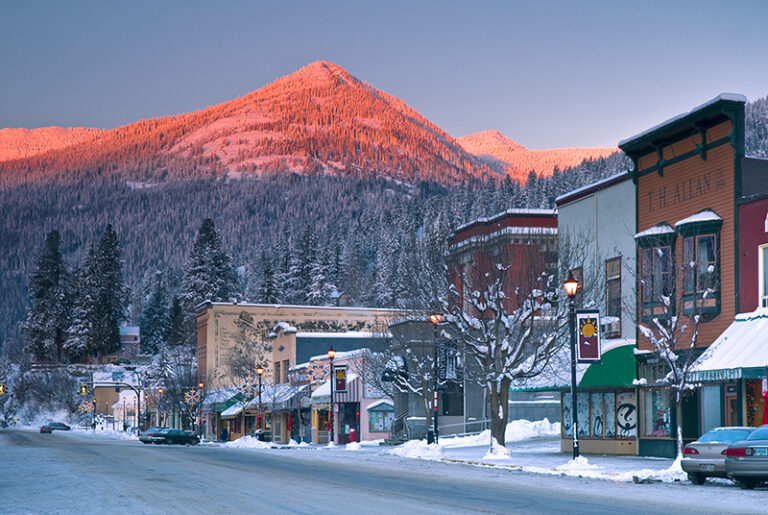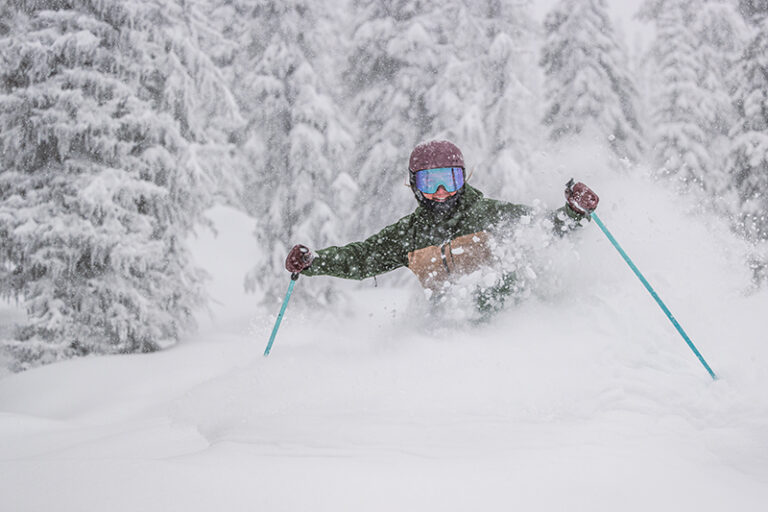Savvy Ski Resorts Prepare for the Future
By Argyle Baukol
When it comes to climate change, it seems that the winter sports media reflects a laissez faire attitude that is typical in the ski culture. Pick up a ski or snowboard magazine and you won’t read the overwhelming details of global warming. While ski blogs might make reference to global warming once in a while, it tends to be the “weather is ever-changing” mantra. It turns out you can’t believe everything you read; ski enthusiasts and industry players are much more aware than it seems.
A lot of reports have been produced over the last seven years that deliver lofty climate chaos statistics. Early this year, Halifax Travel Insurance released a study written by British professor, Bill McGuire, on its effect on the global travel industry. McGuire is the Director of the Benfield-UCL Hazard Research Centre, and like the U.N. Environment Program, he concluded that the global travel industry will see radical and fundamental changes in less than 25 years. McGuire’s study emphasized the affects to ski resorts across the world and he’s not the first to say that the winter ski vacation will be significantly changed by 2030.
McGuire’s study, titled the Halifax Travel Insurance Holiday 2030 report, known as Holiday 2030, bases its predictions on elevation levels and climatic expectations. Just as sea levels are rising, the snow line is creeping to higher elevations and the ski season is condensing which means later opening days and earlier close dates. The study predicts snow is unlikely to last a whole season in any elevation around 3937 feet or lower. For many resorts with low bases like the world famous Austrian destination, Kitzbuhel, at 2624 ft above sea level, the doomsayer would expect them to simply shut down.
In as little as 13 years snowfall may be reduced by 30% and get increasingly worse by 2050. Holiday 2030 reports that ski destinations in parts of the French and Austrian Alps, areas of the Italian Dolomites plus low-lying Eastern European resorts will be threatened as good snow conditions become confined to historical accounts. It’s possible that a lot of European skiers will find themselves traveling to where the summits are taller and everything seems bigger-the North American Rockies.
North American resorts might fare a bit better than their European counterparts, according to the Holiday 2030 report. The Rocky Mountain resorts like Breckenridge, Vail, Aspen, Lake Tahoe, Jackson Hole and Mammoth in California, all have high base-stations. However, one of the northwest’s favorite ski resorts, Whistler Blackcomb (WB), B.C., seems bound for some changes. With a base elevation at 2215 feet above sea level, the unfortunate forecast is ironic since Whistler has one of the best records for environmentally-friendly operations. And for a resort that is constantly voted among the top 10 in North America (SKIING Magazine and Transworld both voted them number 1); Whistler Blackcomb’s environment team is analyzing their options.
Arthur DeJong is the Mountain Planning and Environmental Resource Manager at Whistler Blackcomb. DeJong developed the environmental and sustainability strategy to help the resort address climate change. His team detailed a seven-step plan to survive the environmental changes and maintain a nature-based recreation business. After the assessment stages, his plan earmarks several goals for easing the effects and adapting to the ski industry’s future. WB has maintained many restoration projects to preserve wildlife and has begun new projects to promote education and awareness of global warming. DeJong says that energy and water conservation, investment in renewable energy and a major snow-making plan will extend WB’s ability to adapt.
“It’s true that our base elevation is low, but people really need to dig deeper to know that Whistler Blackcomb isn’t going to go away,” Dejong says. “Only 5% of the resort is below the minimum elevation and our upper terrain is extensive laterally. This is where we can create new runs and new skiing experiences. We’re also planning to double our snow making capacity, so all of this will give us the competitive advantage.” That advantage may also be due in part to WB’s summits; the peak elevation of Whistler Mountain is 7160 ft (2182 m) and Blackcomb Mountain is 7494 ft (2284 m), whereas Kitzbuhel’s top elevation is 6562 ft (2000 m).
Compared to local resorts around eastern Washington, Mt. Spokane’s base elevation is 4200 ft, and 49 Degrees North is at 3923 putting both of them dangerously close to the minimum snowline prediction. Schweitzer and Silver’s bases are also close at 4000 and 4100 respectively.
A new environmental committee is also on task at Schweitzer Mountain. The team is working to find ways to minimize the resort’s environmental impact and hopes to see biodeisel put to use in their fleet. Jennifer Ekstrom, Communications Manager says, “This winter we are testing biodeisel for its feasibility to see how well it does in the cold temperatures.” Depending on how the project goes, their whole fleet may be running on biodeisel next season.
Green power purchasing has become popular among resorts. Schweitzer’s two new lifts that opened this season are powered by wind energy via green tags. With the purchase of green tags, Ekstrom said, “We can support the production of green energy through the energy provider which then introduces wind or solar power into the energy supply. Even if it costs extra, it’s important to Schweitzer’s management to minimize its environmental impact.”
The National Ski Areas Association (NSAA) launched the Sustainable Slopes program in 2000, which encourages renewable power investments. Sustainable Slopes is a voluntary program for resorts to pledge environment friendly practices. In theory, those who participate will hold standard principles like reduce, reuse and recycle. They also promote conservation, energy and water efficiency, curbing pollution as well as investing in renewable energy. Despite the difficulties of tracking voluntary environmentalism, it has resulted in a swing toward clean energy investments. To date, 61 resorts in 18 states are buying renewable energy credits and 28 of those resorts are offsetting 100% of their energy needs, according to the NSAA.
Ski areas that have already experienced less snowfall have installed and increased the use of snow making systems. These systems are used throughout the world to supplement regular snowfall and drought conditions. The contention lies in the unknown effects from interfering with mountain ecology. Some believe that snowmaking could beneficially increase snowpack and improve dry season conditions in late summer and fall. But this is only a theory and opponents say that mountain ecosystems are fragile-added snowpack rushes lower elevations with a surplus of runoff when temperatures warm. Regardless, more resorts have ramped up snow making technology to extend ski days, and the northwest is no exception.
In fact, one of Whistler Blackcomb’s solutions involves a beefed up snowmaking system. In response to the conflicting opinions, DeJong says, “Being in the northwest we have a lot of water and very wet seasons with summer and fall being the driest. Our water supply comes from streams so it doesn’t compete with agriculture. And we do monitor low-flow values to protect fish runs. Whistler is a very green community and snowmaking just hasn’t been a hot button issue here. The real challenge our community is worried about is our carbon footprint.” The burden of the carbon footprint is for everyone-not just skiers. The question is how to get all people to reduce it.
WB’s emissions are relatively low since the mountain’s operations are run by hydropower. DeJong says the main concern is from travelers and the mountain employees’ commute trips. In the past five years, WB’s employees have formalized carpooling system that allows them to use the resort’s fleet. “Our goal is to be a carbon offsetter;” DeJong explains, “we produce 9,000 tons annually of carbon dioxide, and with a $20 million investment in our micro-hydro system within the resort, we can offset 11,000 tons annually. But, our biggest amount of CO2 comes from travelers commuting from their homes to the mountain. It’s one thing to be offsetting your own carbon contribution, but we would like to offset all the emissions from travelers that our resort is responsible for.”
For more information on the National Ski Area Association’s website is www.nsaa.org.













